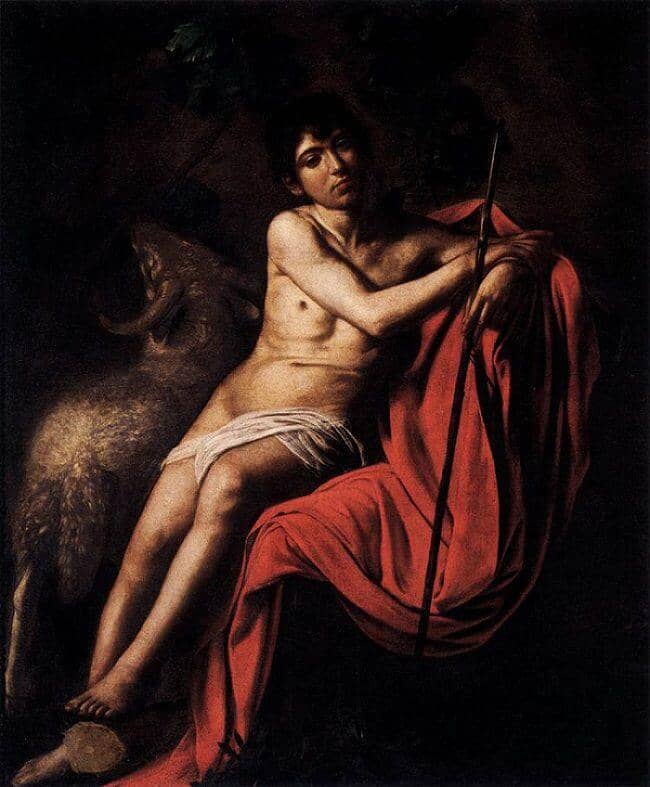John the Baptist, 1610 by Caravaggio

In the Borghese collection by 1613, when it was referred to in a poem by S. Francucci, this work was previously assumed to have been acquired directly from Caravaggio by Scipione Borghese,
sometime between his arrival in Rome in the summer of 1605 and Caravaggio's flight from the city a year later. But Longhi has drawn attention to qualities of handling and color which are close
to the Sicilian paintings, and in fact it seems more likely that this St. John the Baptist is a late work. It may even be the picture of the subject which Caravaggio was meant to have had
with him when he put ashore at Port' Ercole immediately prior to his death. A letter dated 19 August 1610, just after Caravaggio's death, from the Spanish Viceroy in Naples, the conde de
Lemos, instructed the 'auditor' of the garrisons in Tuscany to recover a picture of St. John the Baptist by Caravaggio and send it back to Naples as soon as possible. But it is quite
conceivable that Scipione Borghese (not renowned as a respecter of other people's property, as was shown by the unorthodox manner in which he acquired many of d'Arpino's pictures in 1607
and Entombment by Raphael the following year) may have got there first.
Compared with the earlier Capitolina and Kansas City versions of the subject, the Borhese picture is more richly colouristic - an expressive essay in reds, whites and golden browns. It also
represents a less idealized and more sensuous approach to the male nude, as already prefigured in the stout-limbed figures of certain of Caravaggio's post-Roman works, such as the Naples Flagellation
and the Valletta Beheading of St. John the Baptist.
















